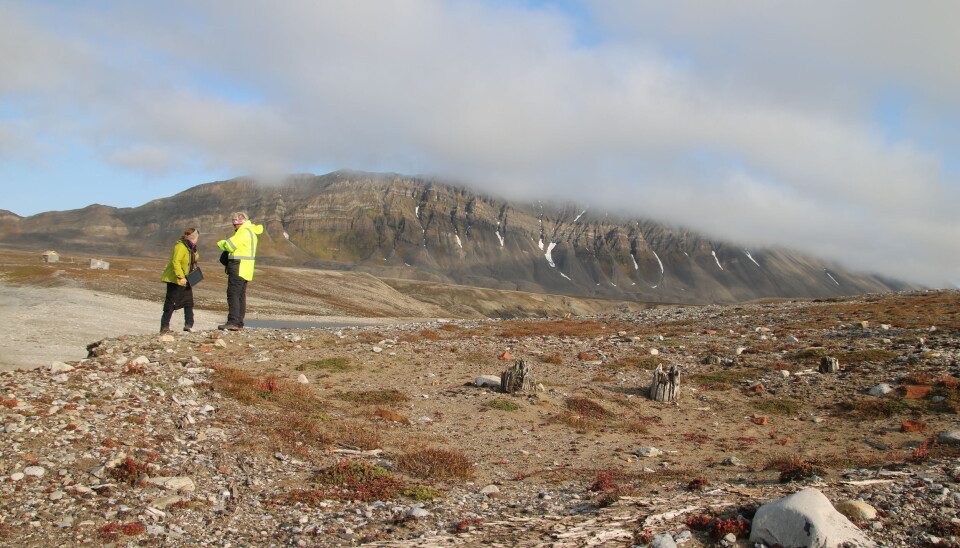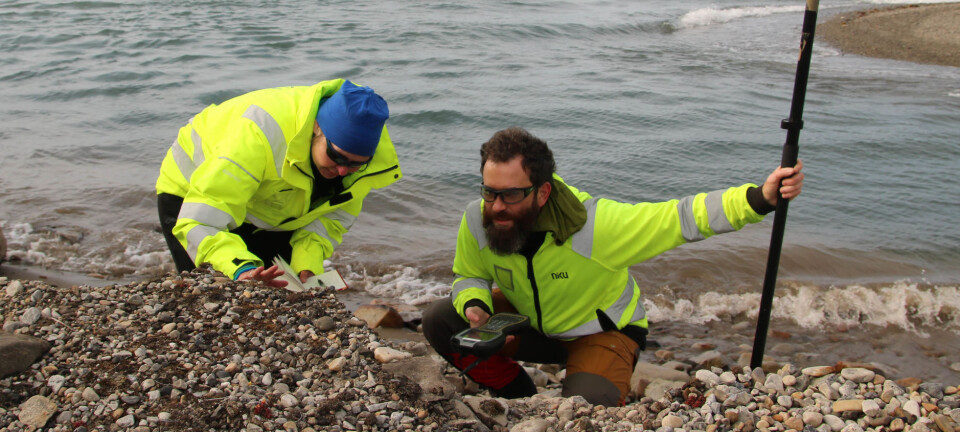An article produced and financed by NIKU - Norwegian Institute for Cultural Heritage Research - read more

How Climate Change is threatening Heritage in the Arctic
Scientists are increasingly worried that archaeological findings in the Arctic will decay due to warmer weather conditions.
As the Arctic experiences rising temperatures, thawing permafrost and increased rainfall, cultural heritage sites and objects are under threat of disintegration.
Not only are weather conditions changing, but tourism and growth have led to further strain on the natural environment. Researchers involved with the interdisciplinary project CULTCOAST are examining climate effects on coastal cultural heritage in the High North areas of Norway but also in relation to the influence of tourism.
The recent discovery of an unknown grave
While conducting fieldwork for the project, researchers recently discovered a partially eroded, unknown grave near other known heritage sites in the Russekeila area on Svalbard’s Kapp Linné.
“This is a classic example of a heritage object that is about to completely disappear before we have the possibility of learning anything from it. And that is very sad,” says project leader Vibeke Vandrup Martens of the Norwegian Institute for Cultural Heritage Research (NIKU). She says the grave would eventually end up in the sea, but this process is hastened by climate changes.
It was found at the point where the Linné -river meets the fjord, and is an unusual location for a grave, sparking theories about the circumstances around the burial.
“We don’t know why it’s down here and not with the more familiar grave sites at Russekeila. The 18th century burial field is on higher ground on the other side of the river. Perhaps this person died on a boat and was hastily buried here, “Vandrup Martens says. Another explanation might be that this grave is earlier than the Russekeila settlement.
“In the grave we are able to see very fine-woven material remnants, woven textiles, wood remnants and metal. Based on this, we think it may date to the 16- or 1700s.”
Cultural heritage threatened by nature and humans
Unfortunately, coastal erosion means there may not be time to discover more information from the site before it disappears. In addition, cultural heritage sites such as this one are very fragile, since they are almost invisible.
Visitors to the area may not always be considerate of the delicate and broken-down building remnants, perhaps unaware that all remnants of human activity in Svalbard from before 1946 are protected by law.
“It is difficult to say if this is due to inadequate knowledge or a lack of interest and awareness,” Vandrup Martens says.
Recently, Svalbard has been in the limelight in Norway because of the longest slow TV-broadcast ever: Svalbard Minute by Minute. The Norwegian Broadcasting Corporation (NRK) presented nine days, five hours and 59 minutes of Arctic landscapes viewed from Norwegian Coastal Express ship Spitsbergen.
Just as the vessel was about to pass by Kapp Linné, the CULTCOAST scientists discovered another heritage site that is also at risk from the elements.
Hunting cabin falling
On route to field work, the scientists stumbled upon the remains of a Russian hunting cabin from the 1800s. These remains have been known for a while, but not its quickly deteriorating current state. The remains are being eaten away by erosion, with the foundation remnants balancing on the water’s edge and set to be reclaimed by nature. In this case, climate change is not entirely to blame. The house was built close to the shore on a sand-dominated foundation and is gradually disappearing. Geologist and researcher Lena Rubensdotter with the Geological Survey of Norway (NGU) says prospects for the cabin are not promising.
“Here and now there are natural processes that are happening. The house site is right at the edge of the sea. And the weather from the sea has an impact on what happens on shore. Right now it all comes down to time and gravity,” Rubensdotter says.
How to preserve cultural heritage in Arctic areas?
The CULTCOAST project is documenting cultural heritage sites, environments and landscapes in Arctic coastal areas, with the aim of developing better methods to monitor, manage and preserve these heritage sites that are exposed to threats from climate change and developmental pressure.
The research project also looks at public behavior in nature, with the team collecting data from both the natural environment and through interviews with people who manage and use the areas. Through surveys and interviews researchers gain insight into possible methods for preserving Cultural Heritage sites in Arctic areas.
“We want to survey usage and experience, and through the project we wish to contribute to both better understanding and suggestions for specific measures that will contribute to safeguarding Cultural Heritage in spite of increasing strain,” says Cecilie Flyen of SINTEF Community.
CULTCOAST has an interdisciplinary approach, combining archaeology, building preservation, geography, quaternary geology and climate science.
“Having such a diversity of disciplines working together strengthens the project and provides advanced knowledge to all of the participants,” says Vibeke Vandrup Martens.
The information gathered during the project will be used to evaluate the best methods for preserving Cultural Heritage objects, sites and landscapes along the Norwegian Arctic coast. Results from the research project will also have transfer value for heritage management on both national and international levels.
———



































